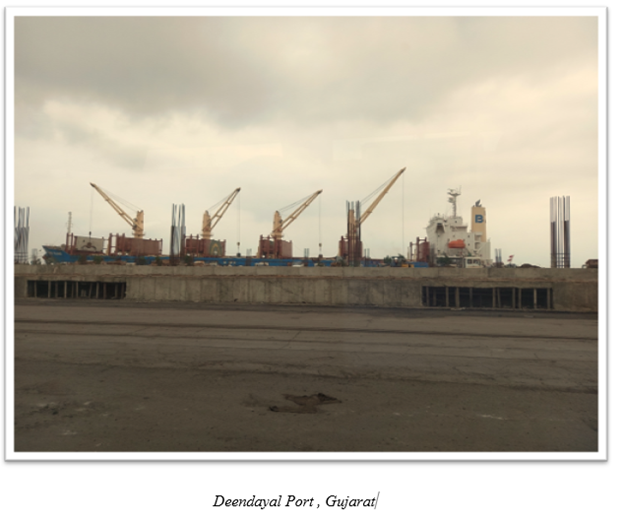
India's shipbuilding industry is aiming for a transformative leap with the introduction of the Shipbuilding Financial Assistance Policy (SBFAP) 2.0 announced in the Budget for FY 2025-26. This improved policy, unveiled in the Union Budget 2025-26, aims to position India among the top five global shipbuilding nations by 2047, aligning with the Maritime Amrit Kaal Vision 2047.
The original SBFAP, launched in 2016, provided financial support to Indian shipyards for contracts signed between April 1, 2016, and March 31, 2026. However, its impact was limited, with only 18 out of 39 registered shipyards availing benefits as of 2024. Recognizing the need for a more robust framework, the government has introduced SBFAP 2.0 with a significantly enhanced allocation of ₹18,090 crore, up from the previous ₹4,000 crore.
Aligning with Maritime Amrit Kaal Vision 2047
These initiatives by the Government of India are a part of the broader Maritime Amrit Kaal Vision 2047, which outlines over 300 initiatives across 11 key areas to drive growth and development in India's coastal regions . The vision aims to reduce the average vessel turnaround time from 25 hours in 2020 to less than 20 hours by 2030 and increase the average ship daily output from 16,000 GT in 2020 to over 30,000 GT by 2030.
SBFAP 2.0 is an ambitious initiative aimed at revitalizing India's shipbuilding and maritime sectors, with a focus on enhancing the country's competitiveness and fostering a circular economy. One of its key features is the provision of enhanced financial assistance to Indian shipyards. By offering direct subsidies, the policy seeks to offset operational cost disadvantages, thus making local shipyards more competitive when vying for contracts. This support aims to boost the industry’s overall efficiency and positioning in the global market.
The Shipbreaking Credit Note Scheme is one of SBFAP 2.0's innovative features . By encouraging ship recycling at Indian shipyards, this strategy advances sustainability. Up to 40% of the scrap value from shipbreaking might be provided to shipyards as a credit note under this program. A closed-loop system that benefits the environment and the domestic shipbuilding sector can be established by using these notes to buy new ships from Indian shipyards [3]. The policy's creation of new shipbuilding clusters around the nation is another progressive step. These regions, which are expected to have a capacity of 1.0 to 1.2 million Gross Tonnage (GT) per cluster, would get direct capital investment to upgrade their infrastructure. This includes crucial developments such as breakwaters and capital dredging. Moreover, a 10-year rent holiday is proposed for the land provided for these clusters, provided that the land is not already offered at a nominal rate, thus making it more financially feasible to establish these hubs .
The policy also emphasizes the importance of a skilled workforce. Allocating substantial funds for training and the establishment of Shipbuilding Capability Development Centres (SCDC), SBFAP 2.0 aims to provide innovative ship design and engineering solutions. With an outlay of ₹1,200 crore, these centers will play a pivotal role in fostering technological advancements and ensuring that India’s shipbuilding sector remains at the forefront of global competition. In addition, a ₹610 crore allocation for research and development in ship technology is set to fuel the creation of new and improved shipbuilding technologies .
The government has also announced the creation of the ₹25,000 crore Maritime Development Fund (MDF) to support these projects . With up to 49% of the funds contributed by the Central government and the remaining portion sourced from ports and the private sector, this fund is intended to support the marine industry's long-term financial needs . By 2030, the MDF is anticipated to stimulate up to ₹1.5 lakh crore in investments in the sector, significantly accelerating the industry's expansion . The addition of large vessels to the harmonized master list of infrastructure sectors represents a substantial policy change. This change allows industry to access funds from the specialised development banks more at favourable financing terms, including External Commercial Borrowing (ECB) and long-term funds from insurance companies and pension funds, thus providing a crucial boost to the development of large vessels .
To further stimulate the sector, the government has extended customs duty exemptions on inputs and components used for shipbuilding for another decade. Additionally, the benefits of the existing tonnage tax scheme, which was previously available only to sea-going ships, will now be extended to inland vessels registered under the Indian Vessels Act, 2021, encouraging the growth of inland water transport .With these forward-looking measures, India is setting the stage for a transformative period in its maritime industry.
The Shipbuilding Financial Assistance Policy 2.0, along with the Maritime Development Fund and other supportive measures, represents a comprehensive strategy to revitalize India's maritime sector and specially the shipbuilding industry. By addressing financial, infrastructural, and skill development challenges, these initiatives aim to position India as a global leader in shipbuilding and maritime innovation by 2047.
References
- https://www.thehindu.com/business/budget/economic-survey-2023-24-39-shipyards-registered-18-utilised-benefits-under-shipbuilding-financial-assistance-policy-scheme/article68433966.ece
- https://infra.economictimes.indiatimes.com/news/ports-shipping/budget-2025-govt-earmarks-rs-18090-crore-for-revamped-shipbuilding-financial-assistance-scheme/117837568
- https://www.ndtv.com/business-news/budget-2025-maritime-industry-gets-a-development-fund-of-rs-25-000-crore-7610022
- https://economictimes.indiatimes.com/industry/transportation/shipping-/-transport/budget-2025-nirmala-sitharaman-announces-maritime-development-fund-of-rs-25000-crore-for-long-term-financing/articleshow/117833275.cms
- https://www.reuters.com/world/india/india-budget-india-set-up-3-bln-maritime-development-fund-shipping-industry-2025-02-01
- https://www.opindia.com/2025/02/25000-crore-maritime-development-fund-infrastructure-status-for-large-ships-modi-govt-plans-big-on-shipbuilding
- https://www.business-standard.com/budget/news/budget-fy26-centre-to-give-infra-to-vessels-to-boost-shipbuilding-in-india-125020100666_1.html
- https://www.ndtv.com/business-news/budget-2025-maritime-industry-gets-a-development-fund-of-rs-25-000-crore-7610022
*Anushka Tripathi is a Research Assistant at CMEC , RIS. Views expressed are personal. Usual disclaimer applies.
Author can be reached out at - Anushka.Tripathi@ris.org.in



